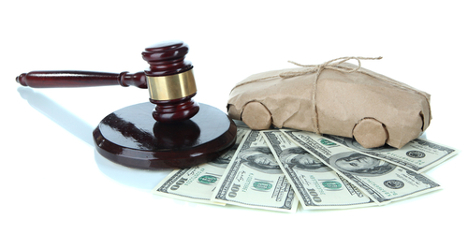What perceived regional used price differences really are

Cox Automotive chief economist Tom Webb didn’t divulge any confidential Manheim Consulting team data about a consignor’s specific portfolio, but he still managed to illustrate how the firm’s information answered questions about perceived regional differences in wholesale pricing.
To close the July edition of Manheim’s Auto Industry Brief, Webb recapped a presentation segment he made to a large industry group. Webb reinforced the point that the company’s data on the price differences between auctions for the same vehicle is after sellers and buyers have moved vehicles and/or bought remotely to maximize profits.
“The differences that remain reflect what is left after all of the market arbitrage by sophisticated sellers and buyers,” Webb said.
To illustrate the situation, Webb shared an example by taking one of the highest-volume make/model/body vehicles Manheim sells and cross-referencing it with their average auction price at the company’s 10 highest-volume auctions for that vehicle.
The two highest-model-year versions of that vehicle sold were a 2012 and 2014.
For the 2014 vehicle, the high-to-low price differential was $449 or 3.2 percent. But for the 2012 model, the high-to-low price differential came in at $918 or 7.1 percent.
“The 2014 model-year version has a much smaller price swing (both dollar and percent) than does the 2012 model-year. Why? Because many of the sellers of the 2014 model-year were large commercial consignors that had already used their resources and economies of scale to move vehicles prior to sale,” Webb said.
“Sellers of the 2012 model-year version were more likely to be small commercial consigners or dealers,” he added.
3 reasons why new-vehicle sales might be stronger than first thought
Webb turned to Manheim Consulting’s blog on Friday to share some analysis connecting new-vehicle sales to the U.S. gross domestic product reading. Webb’s interest stemmed from revised GDP figures, which he said pointed to a “weaker recovery since the Great Recession and, as a result, emphasized further just how much autos have outperformed in recent years.”
To prove his assessment, Webb rewound back to when Ford still was in the first-generation production cycle for the Mustang.
In 1966, Webb recapped that new-vehicle sales declined 2.1 percent even though real GDP grew by a “very strong” 6.6 percent. He explained that occurrence happened because new-vehicle sales had already increased “dramatically” in each of the prior four years. In fact, new-vehicle sales first exceeded the 10-million mark in 1965.
On the opposite side of the spectrum, Webb noted that in 1982 new-vehicle sales declined by only 1.9 percent even though real GDP dropped by 1.9 percent. He said the resulting “disconnect” stemmed from the fact that new-vehicle sale had already fallen significantly in 1979, 1980, and 1981, producing a peak-to-trough swing of 31 percent
Webb said the industry should consider “how strange the new normal” has been by looking at these three facts:
— Only three times in the past 60 years has a double-digit increase in new-vehicle sales occurred when real GDP was growing less than 3.3 percent. Those three years came consecutively: 2010, 2011, and 2012.
— Only once have new vehicles increased in a year in which GDP grew less than 1.5 percent. That happened in 2013.
— 2014 was closer to the trend line (5.9 percent new-vehicle sales growth and 2.4 percent GDP growth), but still it represented the fifth consecutive year above the regression line.

 View The Latest Edition
View The Latest Edition

